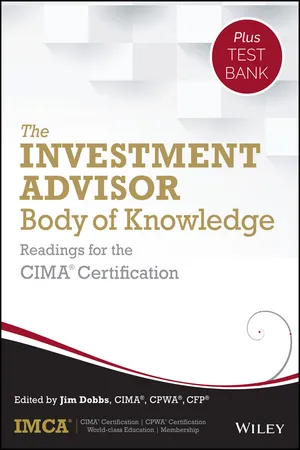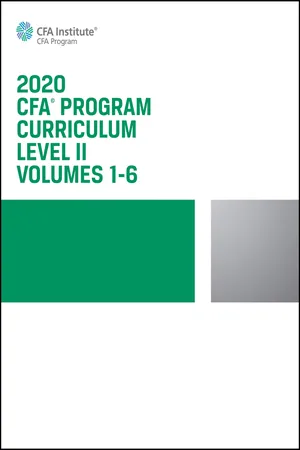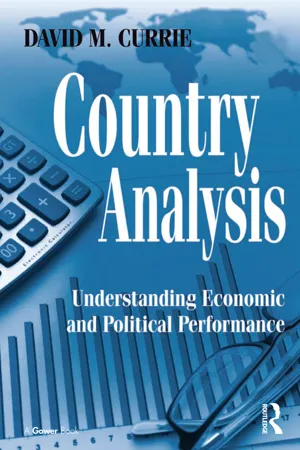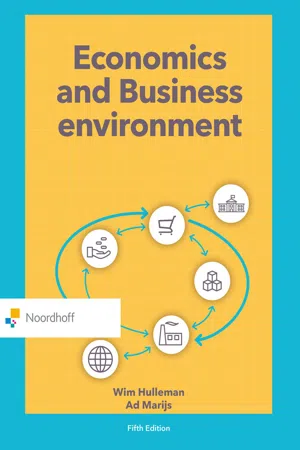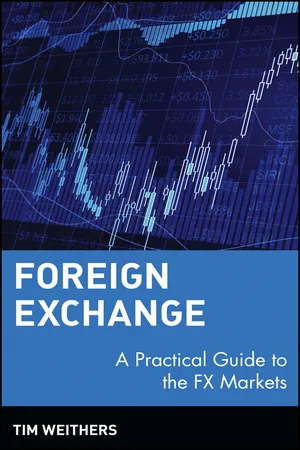Business
Spot Exchange Rate
The spot exchange rate refers to the current exchange rate at which a foreign currency can be bought or sold for immediate delivery. It is the prevailing rate at a specific point in time and is used for immediate transactions, such as buying goods or services in a foreign currency. This rate is influenced by supply and demand dynamics in the foreign exchange market.
Written by Perlego with AI-assistance
Related key terms
10 Key excerpts on "Spot Exchange Rate"
- eBook - ePub
- Joseph P. Daniels, David D. VanHoose(Authors)
- 2017(Publication Date)
- Routledge(Publisher)
The spot market for foreign exchange is the market for contracts requiring immediate delivery of currencies. The spot market for foreign exchange is dominated by large-value transactions among commercial banks and foreign exchange brokers. Spot Exchange Rates are the prices of currency transactions that occur in this market. Economists use Spot Exchange Rates to measure the appreciation and depreciation of currencies and to construct cross rates, real exchange rates, and effective exchange rates.Foreign exchange risk and the forward market for foreign exchange
Exchange rates vary over time. Changes in exchange rates expose house holds, firms, and others who engage in international transactions to potential risk.Foreign exchange risk
Let’s consider an example of how an international transaction may expose a firm to risk from exchange rate changes. Suppose you work for an inter national property developer based in the United States, and your firm has an interest in commercial real estate in the United Kingdom. The property agents will consider “substantial offers” on the property for a period of three months, at which time they will arrange sale of the property to the party submitting the highest offer. It will take approximately three more months for your employer to conclude the transaction and to assume possession of the property.Based on an estimate of the property’s income potential, your managers instruct you to submit a bid of £15 million. Suppose that the exchange rate is currently 1.2488 dollars per pound, so from your firm’s perspective, the current price of the bid that you are submitting is $18,732,000, or the dollar price of the offer (£15 million × 1.2488 $/£ = $18,732,000). Your managers have indicated that they value the property at $18,732,000.Foreign exchange risk:The risk that the value of a future receipt or obligation will change due to variations in foreign exchange rates.Suppose the sellers of the property accept your offer to pay £15 million six months from now. Your firm has a foreign-currency-denominated obligation that spans time and, therefore, creates a foreign-exchange-risk exposure. Foreign exchange risk - eBook - ePub
The Investment Advisor Body of Knowledge + Test Bank
Readings for the CIMA Certification
- (Author)
- 2015(Publication Date)
- Wiley(Publisher)
The foreign exchange (FX) market includes the cash market and the FX derivatives market. The focus in this chapter is on the cash market, which is more commonly referred to as the spot foreign exchange market.A foreign exchange, or currency rate, is simply the price of one country's money in terms of another's. Although exchange rates are affected by many factors, in the end, currency prices are a result of supply-and-demand forces. The world's currency markets can be viewed as a huge melting pot: In a large and ever-changing mix of current events, supply-and-demand factors are constantly shifting, and the price of one currency in relation to another shifts accordingly. No other market encompasses as much of what is going on in the world at any given time as foreign exchange.Approximately 80 percent of foreign exchange transactions have a dollar leg. The dollar plays such a large role in the markets because:- It is used as an investment currency throughout the world.
- It is a reserve currency held by many central banks.
- It is a transaction currency in many international commodity markets.
- Monetary bodies use it as an intervention currency for operations in their own currencies.
- The American dollar against the Japanese yen (USD/JPY)
- The European euro against the American dollar (EUR/USD)
- The British pound against the American dollar (GBP/USD)
- The American dollar against the Swiss franc (USD/CHF)
In general, EUR/USD is by far the rnost traded currency pair and has captured approximately 30 percent of the global turnover. It is followed by USD/JPY with 20 percent and GBP/USD with 11 percent. Of course, most national currencies are represented in the foreign exchange market, in one form or another. Most currencies operate under floating exchange rate mechanisms against one another. The rates can rise or fall depending largely on economic, political, and military situations in given country. - (Author)
- 2019(Publication Date)
- Wiley(Publisher)
Foreign Exchange Market Concepts We begin with a brief review of some of the basic conventions of the FX market that were covered in the CFA Level I curriculum. In this section, we cover (1) the basics of exchange rate notation and pricing, (2) arbitrage pricing constraints on spot rate foreign exchange quotes, and (3) forward rates and covered interest rate parity. An exchange rate is the price of the base currency expressed in terms of the price currency. For example, a USD/EUR rate of 1.3650 means the euro, the base currency, costs 1.3650 US dollars (an appendix defines the three-letter currency codes used in this reading). The exact notation used to represent exchange rates can vary widely between sources, and occasionally the same exchange rate notation will be used by different sources to mean completely different things. The reader should be aware that the notation used here may not be the same as that encountered elsewhere. To avoid confusion, this reading will identify exchange rates using the convention of “P/B,” referring to the price of the base currency “B” expressed in terms of the price currency “P.” 1 The Spot Exchange Rate is usually used for settlement on the second business day after the trade date, referred to as T + 2 settlement. 2 In foreign exchange markets—as in other financial markets—market participants are presented with a two-sided price in the form of a bid price and an offer price (also called an ask price) quoted by potential counterparties. The bid price is the price, defined in terms of the price currency, at which the counterparty is willing to buy one unit of the base currency- eBook - ePub
Country Analysis
Understanding Economic and Political Performance
- David M. Currie(Author)
- 2016(Publication Date)
- Routledge(Publisher)
CHAPTER 8 CurrenciesExchange rates frequently are a difficult topic for US executives. The US economy is so large that most Americans don’t have to worry directly about the value of the dollar on the international currency market. We produce and consume many of our goods domestically, so foreign exchange is not a concern. When we purchase goods produced in other countries, someone else has already exchanged currency, so all we see is the US dollar cost of the products. When we sell goods to other countries, someone else worries about the value of the goods in foreign markets; we’re content to receive our wages or salaries in US dollars.It’s not until we pack our bags for a trip to Europe, Asia, or Latin America that we suddenly face the question of how much our dollar is worth on a foreign market. And then we encounter professionals who deal with currencies on a daily basis. They either meet us at the airport with hands full of currency, shouting that they will buy our dollars, or they’re waiting for us at exchange booths or banks. Either place, we’re in unfamiliar territory.Learning Objectives
After studying this chapter, you should be able to: 1. interpret exchange rates quoted in two ways; 2. explain and apply the concepts of currency appreciation and depreciation; 3. calculate the value in one currency of an asset or liability priced in a different currency; 4. discriminate between the spot rate and the forward rate; 5. explain the factors that influence the value of a currency; 6. explain the difference between fixed and floating exchange rate regimes; 7. explain the risk in a currency transaction caused by appreciation or depreciation of either currency.What is an Exchange Rate?
An exchange rate - eBook - ePub
- W. Charles Sawyer, Richard L. Sprinkle(Authors)
- 2020(Publication Date)
- Routledge(Publisher)
T he international value of a country’s currency has become an inescapable part of the daily flow of economic information. Most of us are aware that a country’s exchange rate is important, but many of us do not have a clear idea of why the exchange rate matters or what causes it to change. As the chapter’s opening quote indicates, the familiar tools of supply and demand analysis can be used to determine a country’s exchange rate. In this chapter, you will learn why the supply and demand model works in analyzing exchange rates—in the same manner, in fact, that it works in analyzing the price of gasoline or pizza, for one dollar or one yen or one gallon of gasoline is indistinguishable from another. By the end of this chapter you should have a good grasp of why exchange rates are important and what factors cause them to change over the long run. Finally, it is obvious to even a casual observer that exchange rates change frequently. These changes, or volatility, are a source of aggravation for individuals, businesses, and governments. The chapter explains what economists know about the effects of exchange rate volatility on international trade and how changes in exchange rates affect the prices of the goods and services we purchase. The final part of the chapter deals with the underlying value of a currency. While the exchange rate we observe in the market often differs from that value, it is very useful to know what that value is.EXCHANGE RATESSuppose that a U.S. importer is purchasing British Jaguars. To purchase the Jaguars, the importer needs to obtain British pounds by exchanging dollars for pounds. The demand for foreign currency is derived from individuals demanding foreign goods and services. This relationship can be applied in reverse. As individuals in the U.K. demand U.S. products, there is an increased demand for dollars. However, this raises the question of how many dollars must be exchanged to obtain the requisite number of pounds, or vice versa? In this example, the relevant exchange rate is the U.S. dollar–U.K. pound exchange rate. In general, the exchange rate is the price of one country’s currency in terms of another. The demand for British pounds relative to the supply of pounds will determine the exchange rate, just as the demand for gasoline relative to the supply of gasoline determines the price of gasoline. Exchange rates fluctuate considerably over time. However, unlike the price of gasoline, changes in the exchange rate are expressed as changes in the value of the domestic country’s currency. An increase in the value of a currency is referred to as appreciation. Analogously, a decline in the value of the currency is referred to as depreciation.For example, let us assume that the exchange rate is $2 per pound, which means that one pound costs $2. If the exchange rate increases to $3 per pound, we would say that the dollar has depreciated. Although the price has risen, each U.S. dollar is now worth less relative to British pounds. It now takes more dollars to buy a pound than it did before. If the exchange rate declines from $2 per pound to $1 per pound, we would say that the dollar has appreciated, as it now takes only $1 to buy one pound. - eBook - ePub
Islamic Capital Markets
A Comparative Approach
- Obiyathulla Ismath Bacha, Abbas Mirakhor(Authors)
- 2019(Publication Date)
- WSPC(Publisher)
Foreign exchange transactions can be categorized into two broad categories: spot transactions and forward transactions. As the name suggests, a spot transaction is for immediate delivery whereas a forward transaction is for delivery at a predetermined future date. Suppose one wants a foreign currency immediately, the appropriate price to pay would be his or her bank’s quoted spot rate for the currency. When it comes to exchange rate quotation, most financial newspapers would show three categories of quotes. These are:• Spot quotes• Forward quotes• Cross ratesAs mentioned above, the spot quote gives the spot price of a foreign currency. Spot Exchange Rates come in two versions or terms, American terms and European terms. Both refer to the same exchange rate but from different viewpoints. When an exchange rate is quoted in American terms, it would be in the form of:Home Currency price per unit foreign currency (HC per FC). A quote in European terms on the other hand would be: Foreign currency price per unit home currency (FC per HC). For example, we see the MYR/US$ quote as follows: RM3.24 per US$, this would obviously be an American term quote. Alternatively, if the quote is: US$0.3086 per MYR, this would be the European term quote.In Malaysia, both the American and European terms are used in exchange rate quotations. Converting from one to another is easy; one simply takes the reciprocal. For example, in the above quotation, the taking reciprocal of the American term quote of MYR/US$ rate gives the European term equivalent.A point of caution is in order. Since each quotation term states the price in terms of a different currency, one has to mindful of needed changes when using Equations 13.1 and 13.2 earlier in the chapter, when computing percentage appreciation or depreciation.13.7.Bid-Ask SpreadsIn currency transactions, banks do not charge commissions. They profit from bid-ask spreads. The bid-ask spread, often denoted as b-a spread, refers to the difference between the prices at which the bank buys versus sells a foreign currency. Generally:Bank buys at the = bid price Bank sells at the = ask price So, the bid-ask spread is essentially the difference between the buy and sell prices and would constitute the profit earned by the bank.Box 13.4. Illustration: The Bid-Ask Spread - eBook - ePub
- Wim Hulleman, Ad Marijs(Authors)
- 2021(Publication Date)
- Routledge(Publisher)
The foreign exchange market has its own terminology for exchange rate increases and decreases. It varies according to the type of exchange rate system. A rise in the rate of a system with flexible exchange rates is termed appreciation; a drop in the exchange rate is termed depreciation. In a system with fixed exchange rates, the exchange rate is not determined by market forces. This means that a change in the value of a currency will occur only following a decision made by the monetary authorities. A decision to increase the value of the local currency is termed revaluation; a decision to decrease the value is termed devaluation.Appreciation DepreciationRevaluation DevaluationForward exchange market
Currencies on the forward market are exchanged after a period of time. The settlement of a forward contract (in other words, the actual exchange of currencies) takes place sometime in the future. The exchange rate against which the currencies are exchanged is set when the forward contract is entered into. This rate is called the forward rate. In general, these forward contracts can be taken out for one, two, three, six, nine or twelve months. There is a forward rate for each of these terms.Premium/discountThe forward rate is often expressed in relation to the spot rate. The difference between the spot rate and the forward rate is described as either a premium or a discount. If the forward rate is higher than the spot rate it is described as a premium, and conversely a discount. The factors that determine whether the forward rate is at a premium or a discount are discussed in Section 10.5 . At this time we are only looking at the quotation of the forward rate. Table 10.2 shows that the spot rate of the euro against the dollar was $1.0632 on 20 January 2017. The amount that has to be added to the spot rate to determine the forward rate has been listed underneath the spot rate. In Table 10.2 - eBook - ePub
- Daniel R. Kane(Author)
- 2018(Publication Date)
- Routledge(Publisher)
1Normal trading conditions, however, frequently dictate currency deliveries extending well beyond those available on a spot basis, so recourse is then made to a different kind of foreign exchange market.THE FORWARD EXCHANGE MARKET
The absence of perfect foresight and the lack of synchronisation between foreign currency receipts and payments creates uncertainty. The economic risk which results from this may be reduced or exploited for profit by channelling foreign exchange transactions through the forward exchange market. This is a market in which:Purchases and sales of currencies are contracted in the present for receipt and delivery in the future,and the forward exchange rate is:The rate at which future transactions are contracted in the present.The distinguishing feature of forward exchange transactions is that they represent a contractual obligation to trade currencies at a future date (periods of one, three and six months are common) at an exchange rate agreed upon at the time of the contract. Once agreed, this rate remains in effect until the contract is executed and does not respond to fluctuations in either the spot rate or the forward rate for other contracts.Forward exchange rates are determined by the forward demand for and forward supply of foreign exchange. For example, a British exporter of computers who expects to receive payment in dollars in three months might seek to reduce the risk of an unfavourable interim movement in the dollar Spot Exchange Rate by contracting to sell dollars forward for delivery in three months. This means that he guarantees in advance the sterling value of the dollars he will receive and then deliver. Increased demand for/reduced supply of a currency for delivery in the future will tend to increase the value of the currency relative to its spot rate, while reduced demand/increased supply will decrease the value of the currency relative to its spot rate. A currency is said to be at a forward premium when its future value exceeds its present value and at a forward discount - eBook - ePub
- (Author)
- 2021(Publication Date)
- Wiley(Publisher)
This is only an illustrative device for more easily explaining various theoretical concepts. The candidate should be aware that currency pairs are not described in terms of “foreign” and “domestic” currencies in professional FX markets. This is because what is the “foreign” and what is the “domestic” currency depend on where one is located, which can lead to confusion. For instance, what is “foreign” and what is “domestic” for a Middle Eastern investor trading CHF against GBP with the New York branch of a European bank, with the trade ultimately booked at the bank’s headquarters in Paris? The Spot Exchange Rate is usually used for settlement on the second business day after the trade date, referred to as T + 2 settlement (the exception being CAD/USD, for which standard spot settlement is T + 1). In foreign exchange markets—as in other financial markets—market participants are presented with a two-sided price in the form of a bid price and an offer price (also called an ask price) quoted by potential counterparties. The bid price is the price, defined in terms of the price currency, at which the counterparty is willing to buy one unit of the base currency. Similarly, the offer price is the price, in terms of the price currency, at which that counterparty is willing to sell one unit of the base currency. For example, given a price request from a client, a dealer might quote a two-sided price on the spot USD/EUR exchange rate of 1.1648/1.1652 - eBook - ePub
Foreign Exchange
A Practical Guide to the FX Markets
- Tim Weithers(Author)
- 2011(Publication Date)
- Wiley(Publisher)
CHAPTER 5The Foreign Exchange Spot MarketTHE SPOT MARKET
The foreign exchange markets revolve around spot (that, is the FX spot market).Confusion—Right from the Start
When I first walked onto our bank’s trading floor in the United States (the floor on which FX transactions were carried out), I distinctly remember a large, rather animated man jump from his chair to his feet and yell out, seemingly to no one in particular, “I buy dollar yen!”—to which I naturally thought, “Well, . . . make up your mind.” This is but one example of a foreign exchange spot dealer communicating in their unique vernacular. This leads us, first and foremost, to consider the quoting conventions associated with foreign exchange—one of the most confusing things around!We said that the foreign exchange markets revolve around the FX spot market. Let’s be more specific about this statement in two ways.1. When we say “the foreign exchange markets” (an expression that appears in abbreviated form in the subtitle of this book), what do we mean? By identifying these as plural, we do not only mean to indicate the main geographic trading centers for the various time zones (more dispersed in AustralAsia: Wellington, New Zealand; Sydney, Australia; Singapore; Hong Kong; Tokyo and Osaka, Japan; more concentrated in Europe: London, Zurich, Frankfurt, Paris; and very concentrated in North America: Stamford, Connecticut, New York, and a couple of other locations), but also the markets for different FX products (spot, forwards, futures, swaps, options, exotics—pretty much everything beside spot being labeled “a derivative”).2. Also, let’s be explicit about what we mean by “the spot market in foreign exchange” and understand how prices are quoted in this context. Recall our earlier assertion that there are five major currencies: USD, EUR, JPY, GBP, and CHF. How are these quoted in the spot market?
Learn about this page
Index pages curate the most relevant extracts from our library of academic textbooks. They’ve been created using an in-house natural language model (NLM), each adding context and meaning to key research topics.

